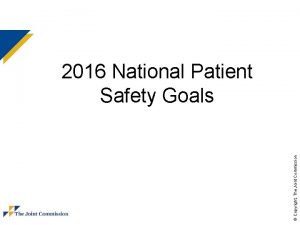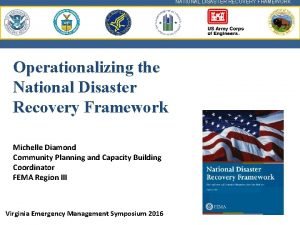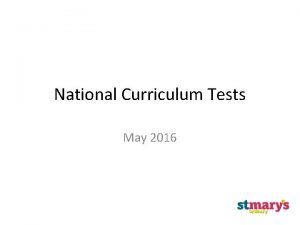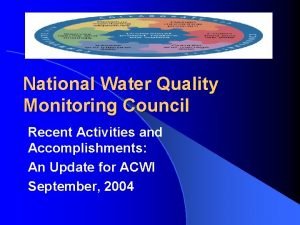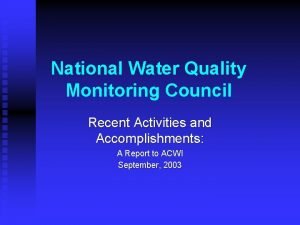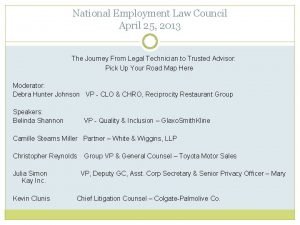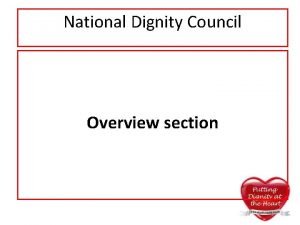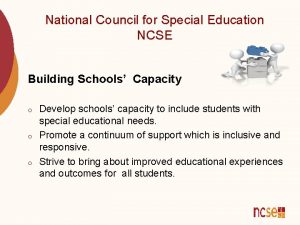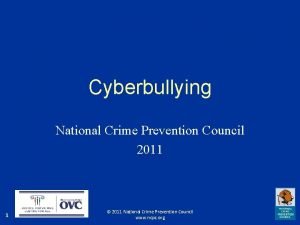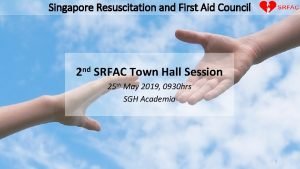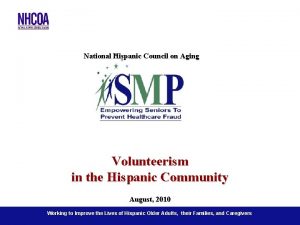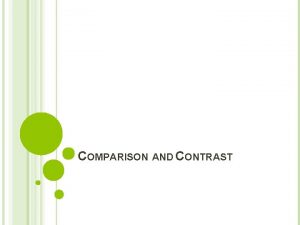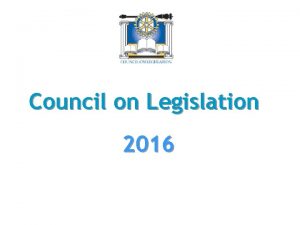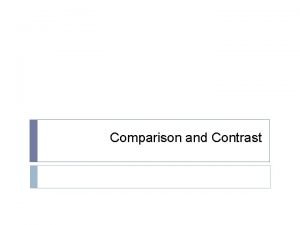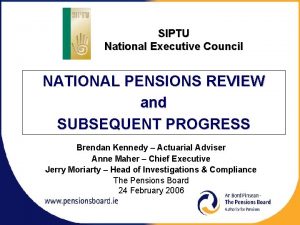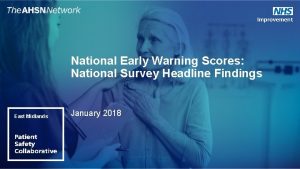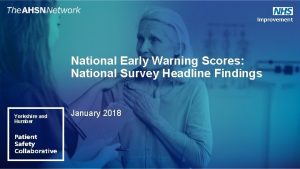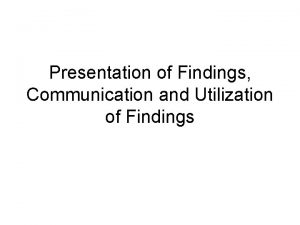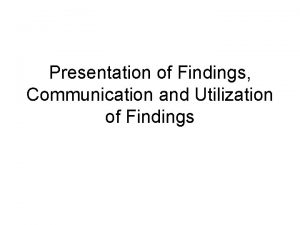2016 Comparison of National Findings and Council Findings





















- Slides: 21

2016 Comparison of National Findings and Council Findings 1

Participants GSUSA GSACPC Girls 76, 820 2, 087 Parents 74, 422 (2. 7% of national respondents) (14. 9% of council girl members) 12, 068 (16. 2% of national respondents) Troop Volunteers 39, 256 747 (1. 9% of national respondents) (10. 6% of council volunteers)

GIRLS

Girl Participants GSUSA Duration in Girl Scouts 25% Less than 1 year 40% 1 -3 years 23% 4 -6 years 12% More than 6 years Race/Ethnicity 73% White 7% Black 7% Hispanic 7% Multiracial 3% Asian or Pacific Islander Girls’ Perception of SES 15% Lower SES 75% Middle SES 10% Higher SES GSACPC Duration in Girl Scouts 23% Less than 1 year 42% 1 -3 years 24% 4 -6 years 11% More than 6 years Race/Ethnicity 61% White 3% Black 12% Hispanic 9% Multiracial 2% Asian or Pacific Islander Girls’ Perception of SES 90% Lower SES 10% Middle SES 0% Higher SES

Girl Participants GSACPC How often did you participate in each of these activities? Total Sample % Regular Participation Badges Journeys Com Serv Outdoors STEM Field Trips 61% 41% 31% 29% 10% 26% How much do you enjoy each of these activities? Total Sample % “A Lot of Fun” Badges Journeys Com Serv Outdoors STEM Field Trips 71% 60% 69% 86% 66% 88% While girls rate Outdoor activities and Field Trips as most fun, only 1 in 4 girls do them regularly.

Girl Participants Key Performance Indicators (KPIs) Satisfaction Retention How satisfied customers are with their overall experience in Girl Scouts Whether customers intend to stay in Girl Scouts next year % Highly Satisfied % Intent to Stay 2015 2016 GSUSA 59% 70% GSUSA 86% 84% GSACPC 89% 90% GSACPC 87% 83%

Girl Participants Top 3 Reasons for Staying in Girl Scouts GSUSA 1. To have fun – 45% 2. To be with my friends – 36% 3. To try or learn new things – 26% GSACPC 1. To have fun – 43% 2. To be with my friends – 32% 3. To try or learn new things – 25% Top 3 Reasons for Leaving Girl Scouts * GSUSA 1. I do too many activities and have to choose – 26% 2. I prefer to do other activities– 25% 3. Girl Scouts doesn’t offer the kinds of activities I want to do – 20% 3. My troop is too disorganized – 20% GSACPC 1. I do too many activities and have to choose – 32% 2. I prefer to do other activities – 29% 3. I don’t want to sell cookies – 28% *asked only of girls who indicated they do not want to stay in GS

Key Takeaways for Girls • GSACPC girl respondents indicated a significantly lower SES status than the national respondents. This may have to do with how the question was worded. • The largest gap in what girls want to do versus their current participation level is in “Field Trips” (88% of girls want to participate but only 26% have participated). • In general, GSACPC girls are satisfied (90%) and want to stay (83%). • If they do leave it is most frequently (32%) because they are involved in too many activities 8

Implications for Working with Girls (SU, Troop, Staff) • What does the low SES or perception of low SES say about the girls in our council? • What are new ways to engage girls in more outdoor opportunities/field trips? • What are new ways to improve girls’ perception of and participation in cookie the program? • What are some new ways to overcome the reasons girls say they leave, as indicated in this survey? 9

PARENTS 10

Parent Participants GSACPC GSUSA Volunteer Status Race/Ethnicity 80% White 7% Black 8% Hispanic 79% White 4% Black 14% Hispanic 15% were BOTH parents/guardians and troop volunteers Socioeconomic Status (SES) 57% were BOTH parents/guardians and troop volunteers Socioeconomic Status (SES) 29% Lower SES 45% Middle SES 26% Higher SES 29% Lower SES 47% Middle SES 24% Higher SES Generational Cohort 43% Millennials (b. 1977 -1996) 49% Gen. X (b. 1965 -1976) 8% Baby Boomers (b. 1945 -1964) 43% Millennials (b. 1977 -1996) 48% Gen. X (b. 1965 -1976) 9% Baby Boomers (b. 1945 -1964)

Parent Participants Key Performance Indicators (KPIs) Satisfaction Retention How satisfied customers are with their overall experience in Girl Scouts Whether customers intend to stay in Girl Scouts next year % Highly Satisfied % Intent to Stay 2015 2016 GSUSA 68% 62% GSUSA 76% GSACPC 68% 62% GSACPC 76%

Parent Participants Top 3 Unique or Special Benefits Girl Scouts Offers 1. Developing character 2. Growing from year-to-year with a group of other girls 3. Building confidence * no difference between GSUSA and GSACPC responses Top 3 Reasons for Leaving Girl Scouts * GSUSA GSACPC 1. She preferred to be involved in other activities – 24% 2. Her troop was too disorganized – 21% 3. Her troop did not do enough activities – 17% 1. She prefer to do other activities – 21% 2. There was too much emphasis on cookie sales – 19% 3. Her troop was too disorganized – 18% *asked only of parents who indicated they do not want to stay in GS

Key Takeaways for Parents • As a result of their participation in GS, parents see the most improvement in girls: o Friendships (78%) o Teamwork (77%) o Confidence (74%) • Well-organized and purposeful meetings, desirable activities, seeing the benefits of GS for their daughters are key to Parent satisfaction. • Parents feel that character development is the primary unique benefit of GS. Growing with a group of other girls and building confidence also top the list. 14

Implications for Working with Parents (SU, Troop, Staff) • What are new ways to share how programming develops character and builds confidence in girls (i. e. highlight new GSLE outcomes)? • What are some new ways to help and support leaders in holding well-organized and purposeful meetings? o Ways to encourage leaders to reach out to parents for assistance? o Ways to improve communication with parents? • How can parent perception of and participation in the cookie program be improved? • How can we help parents understand the “messiness” of Girl Led when they like activities that are organized? 15

VOLUNTEERS 16

Troop Volunteer Participants GSUSA Race/Ethnicity GSACPC Race/Ethnicity 86% White | 5% Black | 5% Hispanic Socioeconomic Status (SES) 85% White | 2% Black | 9% Hispanic Socioeconomic Status (SES) 26% Lower | 45% Middle | 28% Higher Generational Cohort 28% Lower | 44% Middle | 28% Higher Generational Cohort 35% Millennials (b. 1977 -1996) 52% Gen. X (b. 1965 -1976) 13% Baby Boomers (b. 1945 -1964) 33% Millennials (b. 1977 -1996) 52% Gen. X (b. 1965 -1976) 15% Baby Boomers (b. 1945 -1964) Years Volunteering • • 19% volunteered 1 year or less 38% volunteered 2 -5 years 17% volunteered 1 year or less 47% volunteered 2 -5 years Type of Troop • • 58% one troop, same GS grade level 28% one troop, mixed grade levels 47% one troop, same GS grade level 45% one troop, mixed grade levels

Troop Volunteer Participants Key Performance Indicators (KPIs) Satisfaction Retention How satisfied customers are with their overall experience in Girl Scouts Whether customers intend to stay in Girl Scouts next year % Highly Satisfied % Intent to Stay 2015 2016 2015 GSUSA 66% 47% GSUSA 80% GSACPC 70% 53% GSACPC 80% 2016

Troop Volunteer Participants Top 3 Reasons for Staying in Girl Scouts Troop Volunteers 1. I want to help girls grow and reach their full potential – 42% 2. My daughter really likes being a Girl Scout – 27% 3. I like to spend time with my daughter – 25% * no difference between GSUSA and GSACPC responses Top 3 Reasons for Leaving Girl Scouts * GSUSA GSACPC 1. There was too much “red-tape” (rules and paperwork) – 19% 2. I did not receive enough support from parents – 17% 3. The time commitment was too great – 17% 1. The time commitment was too great – 21% 2. I did not receive enough support from parents – 21% 3. There was too much emphasis on cookie/product sales – 18% *asked only of volunteers who indicated they do not want to stay

Key Takeaways for Volunteers • Volunteers stay because they want to help girls grow and spend time with their daughters • 57% of GSACPC volunteers are also parents of a GS • GSACPC volunteers leave because they commit too much time, there is a lack of parental support, and there is too much emphasis on cookie sales • Volunteers who feel supported and appreciated are more likely to promote GS

Implications for Working with Volunteers (SU, Troop, Staff) • How can volunteers be supported in ways that are different from current practice? • What are ways to address the issue/concern that volunteering is too much of a time commitment? • What are new ways volunteers can foster parent involvement? • How can volunteer perception of and participation in the cookie program be improved? 21
 Direct comparison vs limit comparison
Direct comparison vs limit comparison The national patient safety goal 6
The national patient safety goal 6 Tradiksio
Tradiksio National disaster recovery framework 2016
National disaster recovery framework 2016 2016 national curriculum tests
2016 national curriculum tests National council of youth sports
National council of youth sports National water quality monitoring conference
National water quality monitoring conference National water quality monitoring council
National water quality monitoring council National employment law council
National employment law council Dignity champion ideas
Dignity champion ideas National council for special education
National council for special education National aids control council tenders
National aids control council tenders National crime prevention council cyberbullying
National crime prevention council cyberbullying Arts council national lottery project grants
Arts council national lottery project grants National science council taiwan
National science council taiwan Singapore first aid council
Singapore first aid council National hispanic council on aging
National hispanic council on aging Nceac curriculum
Nceac curriculum National innovation council
National innovation council Pagkonsumo ay
Pagkonsumo ay National dignity council
National dignity council National staff development council
National staff development council

